Application Modernization Services
Modernizing Applications and Redefining Possibilities
Whether you are grappling with legacy systems, shackled by convoluted codebases, or hampered by fragmented architectures, we leverage our mastery of cutting-edge tools and methodologies to offer bespoke solutions crafted to your unique needs.
Our process goes beyond mere modernization; it is a holistic journey toward sustainable success. From seamless migration to strategic refactoring and architectural renaissance, we engineer solutions that not only optimize performance but also fortify security and streamline operations.
Yet, our commitment transcends implementation. We stand by your side, providing unwavering support and maintenance, ensuring that your team is armed with the knowledge and resources to harness the full potential of your revitalized applications.
Utthunga’s End-to-end Application Modernization Services
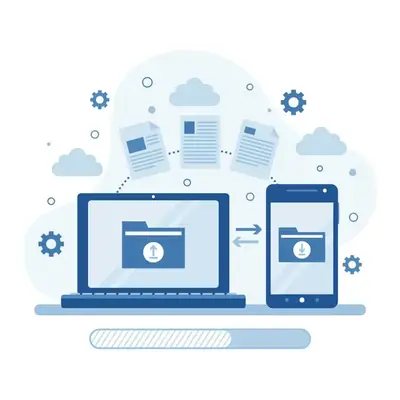
Application Migration Services
i. Technology Migration:
|
ii. Infrastructure Migration:
|
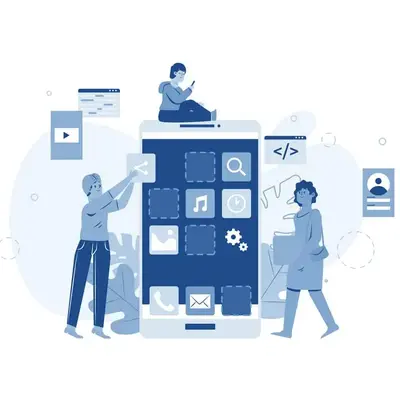
Application Rationalization Services
i. Application Portfolio Assessment:
|
ii. Application Retirement:
|
iii. Application Consolidation:
|
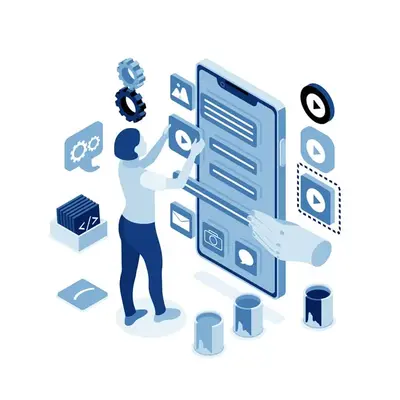
Application Re-engineering Services
i. Code Re-constructing
|
ii. User Experience (UX) Enhancement:
|
iii. Process Optimization
|
iv. Data Re-structuring
|
Our Application Modernization Process
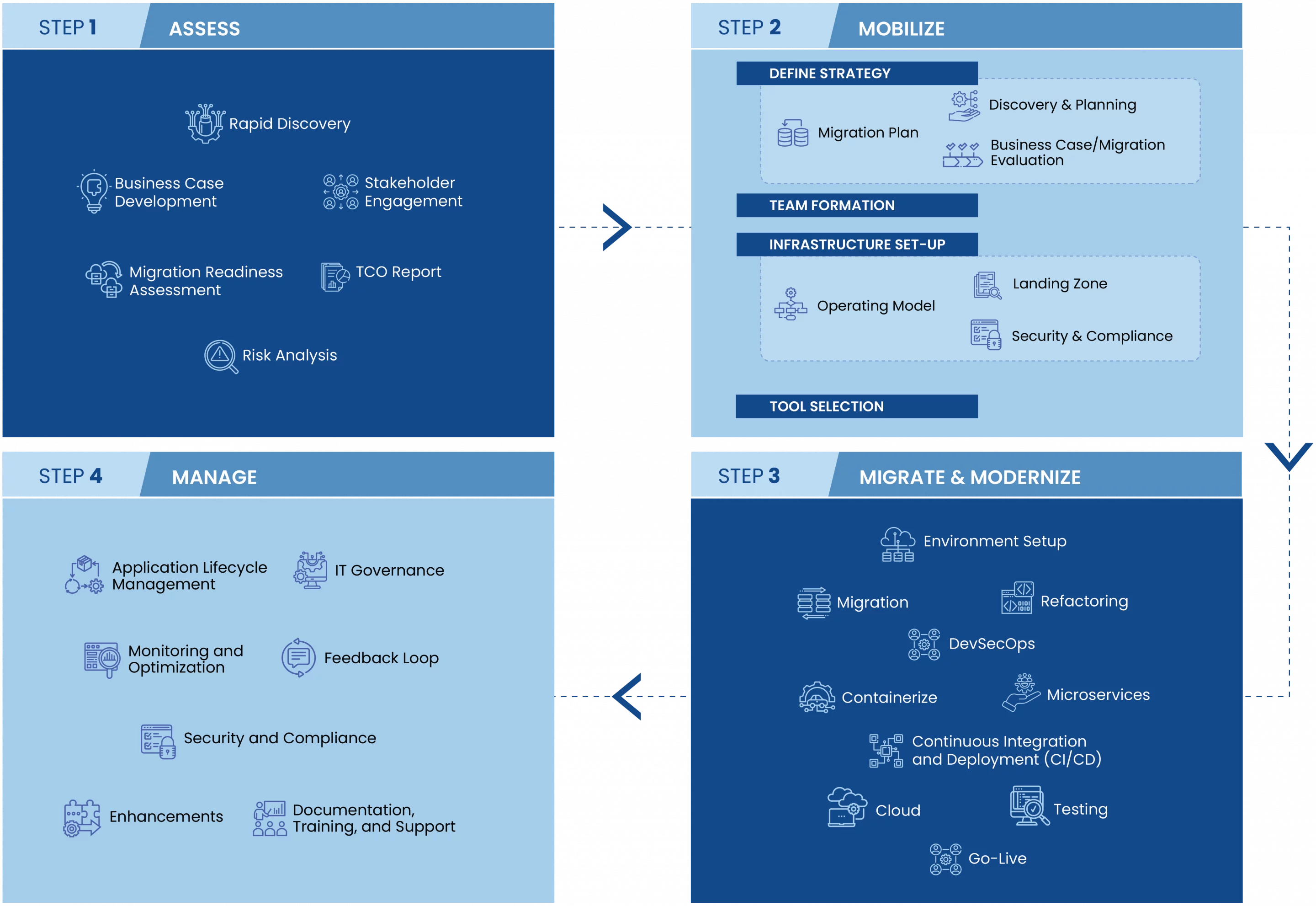
The Utthunga Differentiator

1. Experience
At the heart of our application modernization services lies over 1 million man-hours of expertise. With every line of code and every deployment, our seasoned team brings unparalleled experience to the table.
2. Domain Acumen
We are more than just application modernization specialists; we’re problem solvers. With a track record of crafting custom-fit solutions tailored to individual business use cases, we have honed our expertise to meet the unique needs of every client.


3. Process
i. Assess – Going beyond surface-level analysis, we uncover untapped potential and pave the way for transformative modernization strategies.
ii. Mobilize – We assemble a dynamic and multidisciplinary team of specialists equipped with the latest tools and technologies to kickstart your modernization journey.
iii. Modernize & Migrate – Through meticulous code refactoring, platform migration, and feature enhancement, we transform outdated systems into agile, scalable, and future-ready solutions.
iv. Manage – Through rigorous testing, deployment, and post-implementation support, we deliver not just a product but a complete solution that drives measurable results and empowers your organization to thrive in the digital age.
4. Technology Stack
Our approach to application modernization isn’t just about applying a band-aid solution; it’s about architecting a comprehensive, end-to-end technology stack that drives efficiency, scalability, and agility in your applications. From front-end frameworks to back-end databases, we meticulously select and integrate cutting-edge technologies to ensure seamless operation and future readiness.
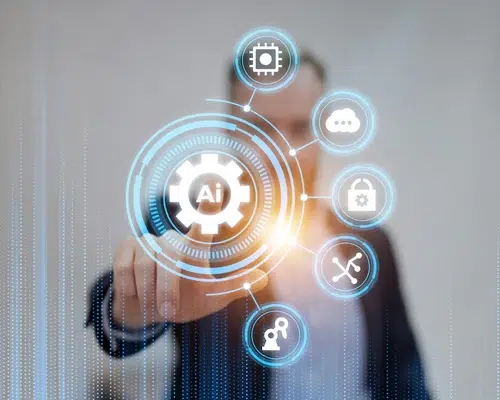

5. Frameworks/ Accelerators
Turbocharge your modernization journey with our arsenal of frameworks and accelerators designed to expedite the transformation process. Our pre-built frameworks and accelerators streamline every step, from assessment to deployment, reducing time to market and minimizing disruptions.
6. Resource Pool
From seasoned developers to cloud architects, our team is equipped with the skills and expertise needed to tackle any challenge head-on. Whether it is legacy code refactoring or cloud-native architecture, count on our experts to deliver results that exceed expectations.


7. Partnerships
Trust us to harness the best technology the industry offers, backed by extensive expertise and experience, to propel your modernization journey forward.
The Proven Track Record
Migrating Legacy On-premise Applications to a Unified Cloud-based Solution
We helped a premier provider of safety & productivity solutions to overcome critical technological bottlenecks by migrating their legacy on-premise applications to a unified cloud-based solution.
The Results:
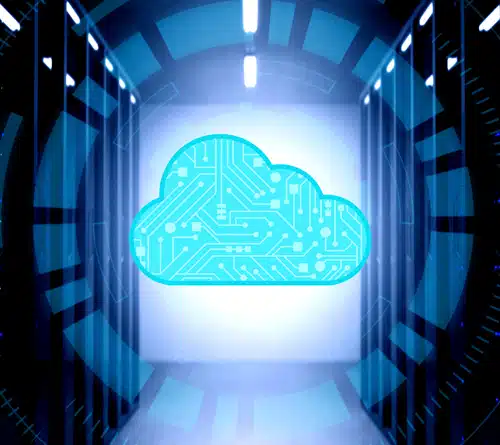

Revolutionizing Industrial Connectivity with an Intelligent Mobility Framework
We assisted a global leader in digital transformation and industrial automation to revolutionize industrial connectivity with an Intelligent Mobility Framework.
The Results:
Transform Yesterday’s Applications into Tomorrow’s Innovations
FAQs
1. What is application modernization services?
2. How do you determine which applications need modernization?
- Age of Technology Stack: Evaluate if the application is built on outdated technology or frameworks that are no longer supported or maintained.
- Performance Issues: Identify applications that frequently encounter performance bottlenecks or scalability challenges, impacting user experience or operational efficiency.
- Security Weaknesses: Assess if the application is vulnerable to security threats due to outdated libraries, protocols, or lack of regular updates.
- Compatibility Concerns: Check if the application faces compatibility issues with newer systems, databases, or operating systems.
- User Feedback: Gather insights from users regarding their satisfaction with the application’s current features, usability, and performance.
- Maintenance Costs: Analyze whether the application’s maintenance costs are increasing excessively due to its outdated nature or complexity.
- Regulatory Compliance: Determine if the application meets current regulatory requirements or if updates are needed to ensure compliance.
- Strategic Alignment: Evaluate if the application aligns with current business objectives and long-term strategic goals.
- Competitive Edge: Compare the application with competitors’ offerings to identify gaps in features, usability, or performance that could be addressed through modernization.
- ROI Analysis: Conduct a cost-benefit analysis to determine the potential return on investment of modernizing the application against maintaining the status quo or replacing it entirely.
By considering these factors, you can prioritize which applications require modernization and develop a strategy for updating your software portfolio. This process may involve consulting with application modernization service providers to determine the best approach for each identified application.
3. What is Utthunga's application modernization process?
Step 1 – ASSESS
In this initial phase, our team of modernization experts conduct:
- Rapid Discovery
- Business Case Development
- Stakeholder Engagement
- Migration Readiness Assessment
- Total Cost of Ownership (TCO) Report
- Risk Analysis
Step 2 – MOBILIZE
This phase focuses on preparation and planning:
a. Define Strategy
- Discovery & Planning
- Migration Plan
- Business Case/Migration Evaluation
b. Team Formation
c. Infrastructure Set-Up
- Landing Zone
- Operating Model
- Security & Compliance
d. Tool Selection
Step 3 – MIGRATE & MODERNIZE
This crucial phase involves the actual transformation:
- Environment Setup
- Migration
- Refactoring
- DevSecOps Implementation
- Containerization
- Microservices Architecture
- Continuous Integration and Deployment (CI/CD)
- Cloud Migration
- Comprehensive Testing
- Go-Live
Step 4 – MANAGE
The final phase ensures ongoing success and improvement:
- IT Governance
- Application Hosting
- Application Lifecycle Management
- Monitoring and Optimization
- Feedback Loop Implementation
- Security and Compliance Maintenance
- Continuous Enhancements
- Documentation, Training, and Support
Utthunga’s application modernization services follow this structured approach to ensure a smooth transition to modern, efficient, and scalable applications. By partnering with Utthunga, you benefit from a proven process that addresses all aspects of modernization, from initial assessment to long-term management and optimization.
4. What are the benefits of modernizing legacy applications?
- Enhanced Performance and Scalability: Application modernization involves optimizing existing code and transitioning to contemporary architectures such as microservices or cloud-based platforms. This process significantly boosts system performance, scalability, and responsiveness, enabling businesses to efficiently manage increased workloads.
- Cost Savings: Legacy applications typically incur higher maintenance costs, outdated software licensing fees, and inefficient resource utilization. By partnering with an application modernization company, businesses can reduce these expenses through automation, cloud adoption, and streamlined operations.
- Improved Security and Compliance: An application modernization service provider updates security protocols and leverages modern security features in cloud environments. This enhances data protection and ensures compliance with industry regulations, crucial in today’s digital landscape.
- Enhanced User Experience: Application modernization involves optimizing existing code and transitioning to contemporary architectures such as microservices or cloud-based platforms. This process significantly boosts system performance, scalability, and responsiveness, enabling businesses to efficiently manage increased workloads.
- Agility and Flexibility: Adopting cloud-native architectures through application modernization enables faster deployment of new features and updates. This enhanced agility allows businesses to respond quickly to market demands and competitive pressures.
- Scalability: A proficient application modernization company ensures that modernized applications can easily scale to accommodate fluctuating workloads. This guarantees that applications can manage increased user demands without performance degradation.
- Integration Capabilities: Modernized applications are easier to integrate with other systems and third-party services.
- Business Continuity and Risk Mitigation: By reducing dependency on outdated technologies and infrastructure, modernizing applications can reduce the risk of system failures and ensure business continuity. This is particularly crucial for mission-critical applications.
- Support for Innovation: Partnering with an application modernization service provider facilitates the integration of modern technologies such as AI, ML, and IoT. This drives business innovation and competitive advantage by harnessing cutting-edge capabilities and enabling new functionalities.
- Comprehensive Analytics and Insights: Application modernization services often include advanced analytics capabilities. These provide valuable insights into user behavior, operational efficiency, and business performance, enabling data-driven decision-making.
In conclusion, engaging an application modernization company offers a wide range of benefits that can transform legacy systems into modern, efficient, and competitive assets. By leveraging the expertise of an application modernization service provider, businesses can not only address current challenges but also position themselves for future growth and innovation. The process of application modernization is an investment in the long-term success and sustainability of an organization’s IT infrastructure.
5. Why should companies consider outsourcing application modernization services?
- Access to Expertise: By choosing to outsource application modernization services, companies gain access to specialized skills and expertise that may not be available internally. An application modernization services provider offers in-depth knowledge of new technologies, architectural patterns, and industry best practices.
- Cost Efficiency: Outsourcing application modernization services can significantly reduce costs when it comes to hiring and training internal staff for short-term projects. Companies that outsource application modernization services often benefit from economies of scale and potentially lower labor costs in certain outsourcing destinations.
- Focus on Core Competencies: When a company decides to outsource application modernization services, it allows their internal team members to focus on core business functions and strategic initiatives. This approach enhances overall operational efficiency and productivity by delegating non-core activities to specialized providers.
- Accelerated Time-to-Market: An experienced application modernization company can accelerate the modernization process due to their established methodologies and expertise. By choosing to outsource application modernization services, companies can quickly adapt to the changing market demands and stay ahead of competitors.
- Risk Mitigation: Professional firms specializing in application modernization services have extensive experience managing risks associated with complex projects. Outsourcing application modernization services to these experts ensures robust risk mitigation strategies and compliance with industry standards and regulations.
- Scalability and Flexibility: When companies outsource application modernization services, they gain the ability to scale resources according to project demands. This flexibility allows for choosing engagement models that best suit specific project requirements.
- Access to Advanced Technologies: Application modernization services providers often invest in cutting-edge technologies and tools. By deciding to outsource application modernization services, companies can leverage these advanced technologies without significant upfront investment, gaining access to innovation and maintaining a competitive edge.
- Continuous Support and Maintenance: Many top application modernization service providers offer ongoing support and maintenance services post-modernization. When organizations outsource application modernization services to the best companies, they ensure their applications remain stable, secure, and optimized over time, with dedicated teams providing round-the-clock support and proactive monitoring.
- Improved User Experience: Outsourcing application modernization to experts often results in more intuitive and responsive applications aligned with user expectations. This is particularly crucial when enhancing user interfaces and experiences.
- Efficient Legacy System Management: For companies struggling with outdated systems, partnering with an application modernization services provider can streamline legacy system management and improve overall IT infrastructure. This is especially beneficial for organizations finding it costly to maintain and integrate legacy systems with modern technologies.
- Global Delivery Model: When companies outsource application modernization services, they can take advantage of a global delivery model. This enables round-the-clock project work through distributed teams in different time zones, reducing time-to-delivery and increasing efficiency.
Conclusion –
In conclusion, the decision to outsource application modernization services to a top application modernization company can provide organizations with a competitive edge, access to specialized expertise, and cost-effective solutions for upgrading legacy systems. By partnering with the best application modernization service provider, companies can navigate the complex landscape of digital transformation more effectively and efficiently.
6. How can legacy applications hinder your business growth in the long run?
- Lack of Scalability: Legacy applications often struggle to accommodate growing business needs due to outdated architectures. An application modernization service provider can transform these systems, enabling them to handle increased data volumes, user traffic, and transactions as your business expands.
- Integration Challenges: Older systems frequently lack modern APIs, making it difficult to connect with new tools and platforms. Application modernization services can bridge this gap, enhancing efficiency and competitiveness by enabling seamless integration with cutting-edge solutions.
- Security Risks: Legacy applications are more susceptible to security threats due to outdated measures and lack of vendor support. An application modernization company can implement robust security protocols, mitigating risks of data breaches, compliance issues, and reputational damage.
- High Maintenance Costs: Maintaining legacy systems often requires specialized skills and resources, draining your budget. By investing in application modernization services, companies can redirect these resources towards innovation and growth initiatives instead of being tied up in maintaining outdated systems.
- Limited Functionality: Outdated applications may lack features required to meet evolving customer demands or industry standards. Application modernization services can enhance functionality, enabling businesses to deliver superior products or services and stay competitive.
- Difficulty in Adapting to Change: Legacy systems are often inflexible, slowing down decision-making and responsiveness to market changes. An application modernization service provider can create agile, adaptable systems that evolve with your business needs.
- Poor User Experience: Outdated interfaces and functionalities can frustrate both employees and customers, impacting productivity and satisfaction. Application modernization services can dramatically improve user experience, boosting efficiency and competitiveness.
- Compliance and Regulatory Issues: As regulatory requirements evolve, legacy systems may struggle to meet new standards. An application modernization company can ensure your systems remain compliant, avoiding legal issues, fines, or barriers to entering new markets.
- Technological Debt: Legacy applications often accumulate technological debt over time, making future upgrades increasingly difficult and costly. Application modernization services can help organizations clear this debt, paving the way for smoother, more cost-effective future improvements.
- Talent Attraction and Retention: Outdated systems can make it challenging to attract and retain top talent who prefer working with modern technologies. By engaging an application modernization service provider, companies can create an environment that appeals to skilled professionals.
- Reduced Competitive Edge: Companies relying on legacy applications may struggle to keep pace with competitors using more advanced systems. Application modernization services can level the playing field, or even provide a competitive advantage through enhanced capabilities and efficiencies.
- Limited Data Insights: Legacy systems often lack advanced analytics capabilities. An application modernization company can implement modern data processing and analysis tools, unlocking valuable insights to drive informed decision-making and business growth.
In conclusion, legacy applications can significantly hinder long-term business growth by creating numerous obstacles across various aspects of operations. Partnering with a reputable application modernization service provider is crucial for overcoming these challenges. By leveraging application modernization services, businesses can transform their outdated systems into agile, efficient, and competitive assets that drive growth and innovation in today’s rapidly evolving digital landscape.
7. What challenges might companies face during application modernization?
- Legacy System Complexity: Legacy systems often have intricate, poorly documented architectures with numerous interdependencies. Deciphering these complexities without disrupting critical business processes is a major challenge. Top application modernization service providers can help by providing specialized tools and methodologies to analyze and untangle these systems.
- Skill Gaps: Modernization requires expertise in both legacy technologies and current platforms. Many organizations lack in-house talent with this diverse skill set. This gap can slow down the modernization process or lead to errors. The best application modernization companies can provide the necessary expertise to bridge this knowledge gap.
- Data Migration: Transferring data from legacy to modern systems is fraught with risks. Challenges include data format incompatibilities, inconsistencies, and the potential for data loss or corruption. Ensuring data integrity and continuity is crucial. Application modernization services typically include robust data migration strategies to address these issues.
- Integration Complexities: Modernized applications must integrate seamlessly with existing IT infrastructure. This integration can be challenging due to differences in protocols, data formats, and architectural styles between old and new systems. The best application modernization service providers specialize in creating effective integration solutions to ensure system-wide compatibility.
- Security Concerns: Modernization can inadvertently introduce new security vulnerabilities. Ensuring that modernized applications meet current security standards while maintaining existing security measures is challenging. Application modernization companies prioritize security throughout the transformation process, implementing up-to-date security protocols.
- Business Continuity: Maintaining uninterrupted business operations during modernization is critical but challenging. It often requires careful planning of phased rollouts, parallel operations, or creating temporary bridges between old and new systems. Application modernization services typically include strategies to minimize operational disruptions.
- Cost Management: Modernization projects can be expensive, involving software licenses, hardware upgrades, training, and potential downtime. Accurately budgeting for these costs and managing them throughout the project is challenging. An application modernization company can help in prioritizing investments and optimizing resource allocation.
- Organizational Change Management: Modernization often requires significant changes in workflows and user interfaces. Resistance to change from employees can hinder adoption. Managing this organizational change effectively is a significant challenge. Application modernization services often include change management strategies to facilitate smoother transitions.
- Performance Optimization: Ensuring that modernized applications perform as well as or better than their legacy counterparts is crucial but challenging. It requires careful design, coding, and testing. Application modernization companies employ various performance optimization techniques to meet or exceed performance expectations.
- Regulatory Compliance: Different industries face varying compliance requirements. Ensuring that modernized systems adhere to all relevant regulations while potentially operating in multi-cloud or hybrid environments can be complex. Application modernization service providers stay abreast of regulatory changes to ensure ongoing compliance.
- Scalability and Future-Proofing: Designing modernized systems to accommodate future growth and technological advancements is challenging but essential. It requires foresight and flexible architecture. Application modernization services include scalability planning to ensure systems can adapt to future needs.
These challenges highlight the complexity of the application modernization process. While they can be daunting, they are not insurmountable. Many organizations find that partnering with an experienced application modernization company or leveraging professional application modernization services can provide the expertise and resources needed to navigate these challenges successfully. Such partnerships can significantly reduce risks, optimize outcomes, and ensure a smoother transition from legacy systems to modern, efficient, and scalable applications.
8. What are the key considerations when choosing an application modernization company in the US?
- Expertise and Experience: Look for an application modernization company in the US with a proven track record in your industry. Assess their expertise in relevant technologies, migration strategies, and complex IT environments. Consider their experience with similar-sized businesses and projects.
- Technical Proficiency: Evaluate the company’s technical capabilities across both legacy and modern technologies. A competent application modernization company in the US should demonstrate proficiency in various programming languages, frameworks, and tools essential for modernization.
- Methodology and Approach: Examine the company’s modernization methodology. A structured approach including assessment, planning, execution, and post-deployment support is crucial. Agile methodologies can be particularly beneficial for iterative modernization projects.
- Security and Compliance: Ensure the application modernization service provider follows robust security practices and understands relevant compliance requirements (e.g., GDPR, HIPAA). They should have clear protocols for data protection and risk management throughout the modernization process.
- Scalability and Flexibility: The chosen company should be able to scale resources and adapt to changing project requirements. This flexibility is essential for handling projects of varying sizes while maintaining quality and timelines.
- Collaboration and Communication: Assess the company’s style of communication and their ability to collaborate effectively with your internal teams and stakeholders. Clear, regular communication is vital for project success and alignment.
- Cost and Value: While cost is important, prioritize the overall value provided by the application modernization company. Consider their expertise, reliability, and long-term support in relation to your budget and expected ROI.
- Support and Maintenance: Inquire about post-deployment support and maintenance services. A reputable application modernization company in the US should offer ongoing support to ensure the stability, performance, and evolution of modernized applications.
- Cultural Fit: Evaluate the cultural alignment between your organization and the modernization company. A strong partnership requires shared values, mutual respect, and a collaborative mindset to navigate challenges effectively.
- Innovation and Future-Proofing: Consider the company’s approach to innovation and future-proofing. They should demonstrate an understanding of emerging technologies and how to incorporate them into modernization strategies.
- Case Studies and References: Request detailed case studies and client references, particularly from businesses similar to yours. This will provide insights into the company’s real-world performance and client satisfaction.
- Vendor Partnerships: Assess the application modernization company’s alliances with leading technology vendors. Strong partnerships often provide access to cutting-edge tools, resources, and industry expertise, enhancing the quality and efficiency of modernization projects.
- Local Presence and Understanding: As you’re looking for an application modernization company in the US, consider their local presence and understanding of the US market, regulations, and business practices. This can be crucial for smooth collaboration and compliance.
- Customization Capabilities: Assess the company’s ability to tailor their services to your specific needs. A one-size-fits-all approach rarely works in application modernization.
By carefully considering the above factors, you can select an application modernization company in the US that not only meets your current needs but also aligns with your long-term business goals. Remember, the right partner should act as an extension of your team, bringing expertise, innovation, and reliability to your modernization journey.
9. What is the 7-step plan for legacy application modernization?
Here’s an in-depth look at the 7-step plan for legacy application modernization:
i. Retain: The first step in the legacy application modernization process involves assessing which applications can remain as-is. Some legacy systems may still be functional and cost-effective, requiring no immediate action. A thorough evaluation by a legacy application modernization company can help determine which applications fall into this category.
ii. Retire: Next, legacy application modernization service providers identify outdated or redundant applications that can be phased out. This step helps reduce unnecessary maintenance costs and streamlines the overall IT infrastructure.
iii. Rehost: Also known as “lift and shift,” this step involves moving legacy applications to a modern infrastructure, such as the cloud, without changing the application’s core architecture. This is often a quick win in the legacy application modernization process.
iv. Replatform: This step goes beyond rehosting by making minimal changes to the application to take advantage of new platform features. Legacy application modernization companies often recommend this approach for applications that are generally sound but need some updates to improve performance or scalability.
v. Refactor: In this more intensive phase of legacy application modernization, the application’s code is restructured and optimized without changing its external behavior. This can improve non-functional attributes such as maintainability, performance, and scalability.
vi. Rearchitect: Sometimes, legacy application modernization requires a complete overhaul of the application’s architecture. This step involves re-imagining how the application is built and deployed, often leveraging microservices or other modern architectural patterns.
vii. Replace: The final step in the legacy application modernization process involves replacing the old application entirely with a new, often cloud-native solution. While this can be the most disruptive approach, it may be necessary for severely outdated systems that can’t meet current business needs.
By following this 7-step plan, legacy application modernization service providers can help businesses transform their IT landscape, improve operational efficiency, and drive innovation. Each step in this legacy application modernization process requires careful consideration and expertise, which is why many organizations choose to partner with a reputable legacy application modernization company to guide them through this complex journey.
Remember, the key to successful legacy application modernization lies in choosing the right approach for each application in your portfolio. An experienced legacy application modernization company can help you navigate these decisions and implement the most effective modernization strategy for your unique business needs.
10. What are the major triggers that signal it's time for application modernization?
i. Performance issues: When your legacy applications struggle to handle increased workloads or user demands, it’s a clear sign to seek application modernization services. Slow response times and frequent crashes can severely impact user experience and business operations.
ii. Security vulnerabilities: Outdated systems are often more susceptible to cyber threats. If your applications can’t keep up with the latest security standards, it’s crucial to engage with application modernization service providers to enhance your security posture.
iii. Compatibility problems: As technology evolves, older applications may struggle to integrate with newer systems or platforms. Application modernization can help ensure your software remains compatible with current and future technologies.
iv. Maintenance challenges: If maintaining your legacy applications becomes increasingly difficult or costly, it’s time to consider an application modernization company. Modernized applications are typically easier to maintain and update.
v. Lack of scalability: When your current application can’t efficiently scale to meet growing business needs, application modernization services can help create a more flexible and scalable solution.
By recognizing these triggers early, businesses can proactively seek application modernization services to address challenges before they become critical issues. Working with reputable application modernization service providers ensures that your software remains efficient, secure, and aligned with your business goals. Whether you need to update a single application or modernize your entire software ecosystem, partnering with the right application modernization company can transform your digital landscape and drive long-term success.
To gain a deeper understanding of when and why you should consider updating your legacy systems,explore these 11 key signs that it’s time for application modernization.
11. What key factors should be considered when going through the application modernization process?
i. Assessment of Current Applications: Start by evaluating your existing applications. Identify which applications need modernization and which ones can be retired. Understanding the current state of your applications is crucial for a smooth transition.
ii. Business Goals Alignment: Ensure that the modernization efforts align with your business goals. This alignment helps in prioritizing the applications that will provide the most value to your business once modernized.
iii. Technology Selection: Choose the right technology stack for your modernization project. Consider factors like scalability, performance, security, and compliance. The technology should support future growth and integration with other systems.
iv. Cost-Benefit Analysis: Conduct a thorough cost-benefit analysis. Understand the costs involved in the modernization process and weigh them against the expected benefits. This analysis will help you make informed decisions and secure stakeholder buy-in.
v. Expertise and Resources: Engage with experienced application modernization service providers. A professional application modernization company can provide the expertise and resources needed to navigate complex modernization projects effectively.
vi. Data Migration Strategy: Plan your data migration strategy carefully. Data integrity and security are paramount during the migration process. Ensure that your data migration plan minimizes downtime and prevents data loss.
vii. Security Considerations: Modernize your applications with security in mind. Implement modern security practices and protocols to protect your applications from potential threats.
viii. User Experience: Focus on improving the user experience. Modernized applications should offer a better user interface and enhanced functionality to meet the evolving needs of your users.
ix. Scalability and Performance: Ensure that your modernized applications are scalable and perform well under varying loads. This consideration is essential for supporting future growth and maintaining optimal performance.
x. Testing and Quality Assurance: Implement rigorous testing and quality assurance processes. Thorough testing ensures that the modernized applications function correctly and meet your business requirements.
xi. Continuous Improvement: Application modernization is not a one-time project but an ongoing process. Establish a framework for continuous improvement to keep your applications up-to-date with the latest technologies and business needs.
For a detailed discussion on these factors, refer to our comprehensive blog post, The Essential Checklist for Application Modernization.
By considering these factors and leveraging the expertise of leading application modernization service providers, you can ensure a successful transition that aligns with your business goals and technological advancements.
12. What is an example of application modernization?
For instance, an application modernization company might help migrate an on-premises CRM to a cloud-native architecture, incorporating modern features like mobile accessibility, AI-powered analytics, and seamless integration with other business applications. This transformation not only enhances functionality but also improves performance and security.
Application modernization services often include re-architecting the application, updating the codebase, and implementing new technologies. The goal of such an application modernization service is to extend the lifespan of valuable business applications while leveraging the benefits of contemporary tech stacks.
By partnering with a reputable application modernization service provider, organizations can ensure their critical systems evolve to meet current business needs and technological standards. This example showcases how application modernization can significantly impact a company’s operational efficiency and competitive edge.
13. What is application transformation services?
An application modernization service provider offering transformation services typically begins by assessing the current state of a client’s applications. They then develop a strategic plan to overhaul these systems, often incorporating cutting-edge technologies, cloud migration, and architectural improvements.
The scope of application transformation services can include:
- Re-architecting applications for cloud environments
- Implementing microservices and containerization
- Enhancing user interfaces and experiences
- Integrating AI and machine learning capabilities
- Improving data management and analytics
- Strengthening security measures
Application modernization companies provide these transformation services to help businesses adapt to changing market demands, technological advancements, and evolving user expectations. By leveraging application transformation services, organizations can turn their legacy systems into agile, efficient, and future-ready applications.
The goal of these services is not just to update technology, but to align IT capabilities with business objectives. This often results in increased operational efficiency, reduced maintenance costs, and improved ability to innovate.
Application modernization service providers specializing in transformation can guide businesses through this complex process, ensuring a smooth transition from outdated systems to modern, adaptable applications that drive growth and competitiveness.
14. What is the future of application modernization?
In the coming years, we can expect application modernization service providers to focus on several key areas:
1. AI-driven modernization: Application modernization companies will likely incorporate artificial intelligence to automate and optimize the modernization process, making it faster and more efficient.
2. Cloud-native architectures: The shift towards cloud-native applications will continue, with application modernization services emphasizing containerization, microservices, and serverless computing.
3. Low-code/no-code platforms: These platforms will become more prevalent, allowing for rapid application development and modernization, even for non technical users.
4. Edge computing integration: Application modernization service providers will increasingly consider edge computing in their strategies to improve performance and reduce latency.
5. Continuous modernization: Rather than one-time overhauls, the future will see a trend towards ongoing, iterative modernization efforts.
6. Security-first approach: As cyber threats evolve, application modernization companies will prioritize security measures throughout the modernization process.
7. IoT and 5G compatibility: Application modernization services will focus on preparing applications for the Internet of Things (IoT) ecosystem and 5G networks.
8. Sustainability: Green IT practices will become a key consideration in application modernization strategies.
The future of application modernization will likely see closer collaboration between application modernization service providers and their clients, with a focus on aligning IT capabilities with business goals. As the field evolves, application modernization companies will need to stay agile, continuously updating their skillsets and service offerings to meet the changing demands of the digital world.
This future landscape presents both challenges and opportunities for businesses and application modernization service providers alike, promising a more efficient, secure, and innovative digital future.
15. What is application migration and why is it important?
Application migration services are important for several reasons:
1. Cost Efficiency:
By leveraging the expertise of an application migration service provider, businesses can reduce operational costs associated with maintaining outdated infrastructure. This cost reduction extends beyond immediate savings, encompassing long-term benefits such as reduced energy consumption and optimized resource allocation.
2. Scalability: Cloud environments offer improved scalability, allowing applications to handle varying workloads more efficiently. This elasticity enables businesses to rapidly adapt to changing market demands without the need for significant upfront investments in hardware.
3. Performance Improvement: Modern cloud platforms often provide better performance and reliability compared to legacy systems. Application modernization services can optimize applications to take full advantage of cloud-native features, resulting in faster response times and improved user experiences.
4. Security Enhancement: Application modernization services typically include updating security measures to protect against evolving cyber threats. This includes implementing advanced encryption, access controls, and compliance with the latest security standards, significantly reducing the risk of data breaches and unauthorized access.
5. Compliance: Many application migration service providers ensure that migrated applications meet current regulatory requirements. This is particularly crucial in industries with strict data protection laws, as modernized applications can more easily adapt to changing compliance landscapes.
6. Innovation Enablement: Modernized applications can more easily integrate with new technologies, fostering innovation. This flexibility allows businesses to quickly adopt emerging technologies such as AI, machine learning, and IoT, staying ahead of the competition.
7. Business Agility: Application modernization services help businesses become more agile, responding quickly to market changes and customer needs. This increased agility translates into faster time-to-market for new features and services, giving businesses a competitive edge in rapidly evolving markets.
As an experienced application modernization company, we recognize that successful migration is not just about moving applications but also about optimizing them for their new environment. This is where application modernization services come into play, ensuring that legacy applications are not just relocated, but also refactored or rebuilt to take full advantage of cloud-native features.
The importance of application migration and modernization cannot be overstated in today’s digital landscape. Businesses that partner with a skilled application modernization service provider position themselves to compete more effectively, innovate faster, and provide better services to their customers.
By engaging with a reputable application migration service provider, organizations can ensure a smooth transition, minimize disruption to business operations, and maximize the benefits of their modernized application ecosystem. This partnership can be the catalyst for digital transformation, driving business growth and opening new opportunities in an increasingly digital world.
16. How does application reengineering differ from application modernization?
Application reengineering involves fundamentally redesigning and rebuilding an application from the ground up. It’s a more comprehensive approach that goes beyond surface-level changes. Application reengineering typically includes:
- Analyzing the existing application’s functionality and architecture
- Redesigning the application’s structure and logic
- Recoding the application using modern programming languages and frameworks
- Optimizing the application for current and future business needs
Reengineering is often chosen when an application’s core architecture is outdated or when significant changes in business processes require a complete overhaul.
In contrast, application modernization is a broader term that encompasses various strategies to update legacy applications. As a leading application modernization company, we offer services that include refactoring, re-plating, rehosting, rearchitecting, and more.
Modernization can be less disruptive and often preserves valuable business logic while updating the application’s infrastructure or interface.Key differences:
1. Scope: Reengineering involves a complete rebuild, while modernization can range from minor updates to significant transformations.
2. Risk and cost: Reengineering typically carries higher risk and cost due to its comprehensive nature, whereas modernization can be more incremental and budget-friendly.
3. Time frame: Modernization projects can often be completed more quickly than full reengineering efforts.
4. Preservation of existing systems: Modernization often aims to preserve valuable aspects of the existing system, while reengineering creates an entirely new system.
We assess each client’s unique needs to determine whether reengineering or modernization is the most appropriate approach. Our application modernization services are tailored to balance factors such as business goals, technical debt, and resource constraints.
Ultimately, both application reengineering and application modernization serve the goal of improving an organization’s software assets. The choice between them depends on factors such as the current state of the application, business requirements, budget, and long-term technology strategy. An experienced application modernization service provider can guide businesses through this decision-making process, ensuring the chosen approach aligns with their overall digital transformation objectives.
17. What is application rationalization and how does it lead to cost savings?
Application rationalization typically involves the following steps:
- Inventory: Cataloging all applications within the organization.
- Assessment: Evaluating each application’s business value, technical health, and operational costs.
- Categorization: Grouping applications based on their strategic importance and performance.
- Decision-making: Determining which applications to retain, replace, retire, or modernize.
- Implementation: Executing the rationalization plan with the help of an application modernization company.
The process leads to cost savings in several ways:
1. Elimination of Redundant Applications: By identifying and removing duplicate or overlapping applications, organizations can significantly reduce licensing, maintenance, and support costs. An experienced application modernization service provider can help streamline this process, ensuring that vital functionality is preserved while redundancies are eliminated.
2. Retirement of Obsolete Applications: Aging or rarely used applications often consume disproportionate resources. An application modernization service provider can help identify these applications and plan for their retirement, reducing infrastructure and support costs.
3. Optimized Resource Allocation: Rationalization allows organizations to focus resources on high-value applications. An application modernization company can guide this prioritization, ensuring that investments are directed towards applications that drive business value.
4. Reduced Complexity: A streamlined application portfolio is easier and less expensive to manage. Application modernization service providers can help simplify the IT landscape, leading to reduced operational costs and improved agility.
5. Cloud Migration Savings: As part of application modernization services, rationalization can identify applications suitable for cloud migration. Moving appropriate applications to the cloud can result in significant infrastructure and operational cost savings.
6. Improved Licensing Management: Rationalization helps organizations optimize their software licensing, potentially reducing licensing costs. An application modernization company can assist in aligning license agreements with actual usage and needs.
7. Enhanced Operational Efficiency: By modernizing and consolidating applications, organizations can streamline processes and improve productivity. Application modernization services often include process optimization alongside technical updates.
8. Reduced Technical Debt: Addressing legacy applications through modernization reduces long-term maintenance costs and the accumulation of technical debt. An application modernization service provider can develop strategies to manage and reduce technical debt systematically.
9. Improved Integration: Rationalization often leads to better integration between remaining applications. This improved interoperability, facilitated by application modernization services, can lead to operational efficiencies and cost savings.
10. Data Center Consolidation: As applications are rationalized and modernized, organizations often find opportunities to consolidate their data center footprint, leading to significant infrastructure cost savings.
In conclusion, application rationalization is a crucial component of application modernization that can lead to substantial cost savings. By partnering with a reputable application modernization service provider, organizations can navigate this complex process effectively. The right application modernization company will not only help identify immediate cost-saving opportunities but also lay the groundwork for long-term efficiency and agility in the application portfolio. This strategic approach to application management ensures that IT resources are aligned with business objectives, driving both cost optimization and innovation.
